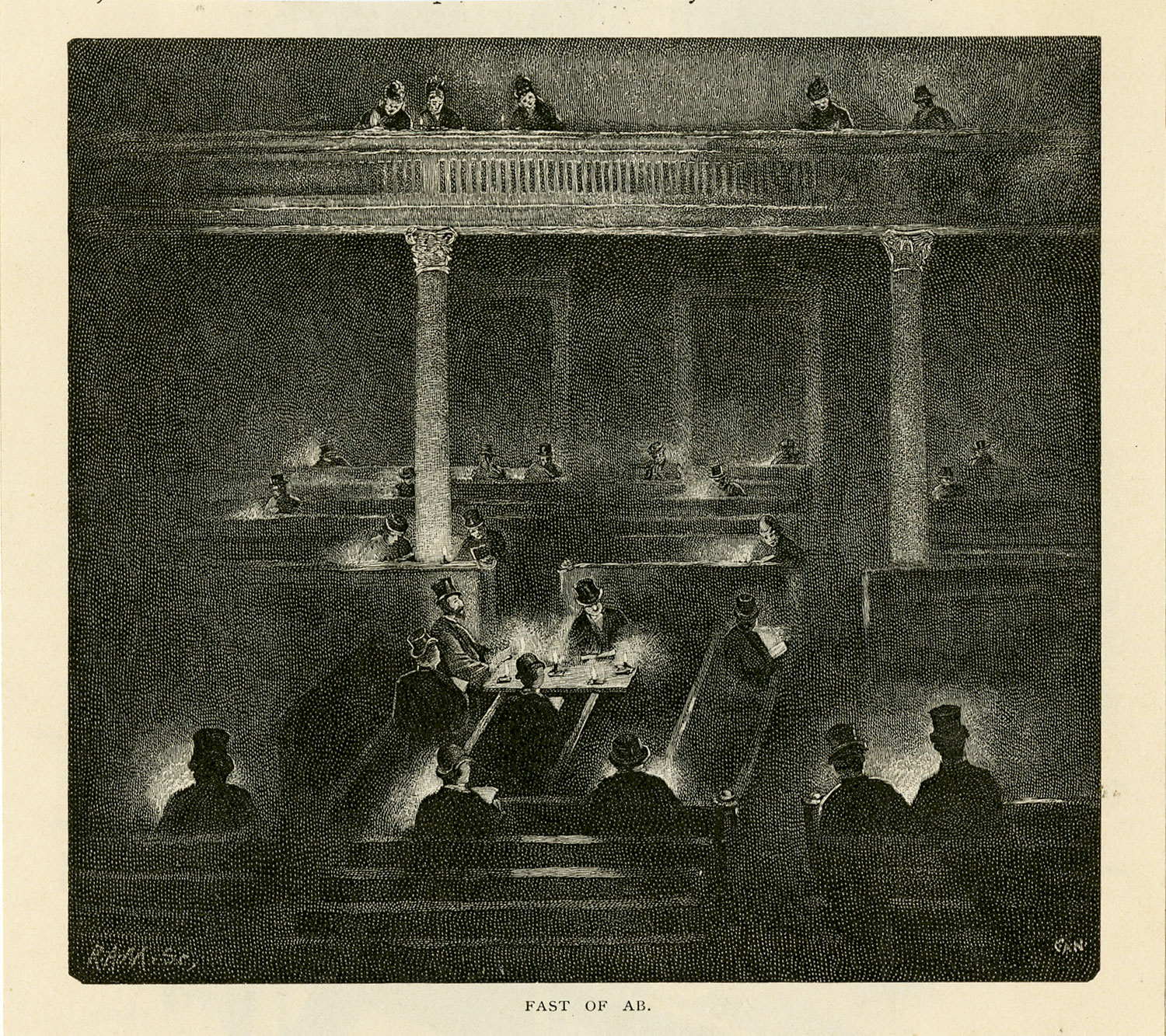This scene depicts Tisha B’Av, a fast day commemorating the destruction of the First and Second Temples in Jerusalem, at the Nineteenth Street Synagogue of New York’s Congregation Shearith Israel. The holiday is observed by fasting, and also by abstaining from various activities, such as bathing, taking trips or outings, wearing fine or festive clothing (including leather shoes), engaging in marital relations, and studying the Torah. These restrictions are meant to allow Jews to properly mourn the loss of the Temple.
Jewish men are shown here, illuminated by candlelight, reciting kinnot (elegies mourning the Temple’s destruction), which takes place after the recitation from the Book of Lamentations. The article accompanying the illustration, entitled “The Jews in New York” and published in the January 1892 edition of Century Magazine, notes that, according to tradition, “lights, electric or gas, remain unkindled. Wax candles make darkness visible. Each in its small candlestick ordinarily suffices for two persons.” This creates a solemn atmosphere of serious prayer, in stark contrast with the brightly lit activity of other holidays and appropriately reflecting the mood of lamentation. In addition, this particular rendering of holiday ritual is unique in that, as the text notes, “the assembly is not large,” as most of the congregation is not at the synagogue taking part in this holiday. Though we see only a scattering of men in the pews and a few women up in the gallery, the sparsely populated sanctuary manages to portray the Jewish people’s enduring sorrow over the loss of the temple, the “grief…poignant in the prayers.”
